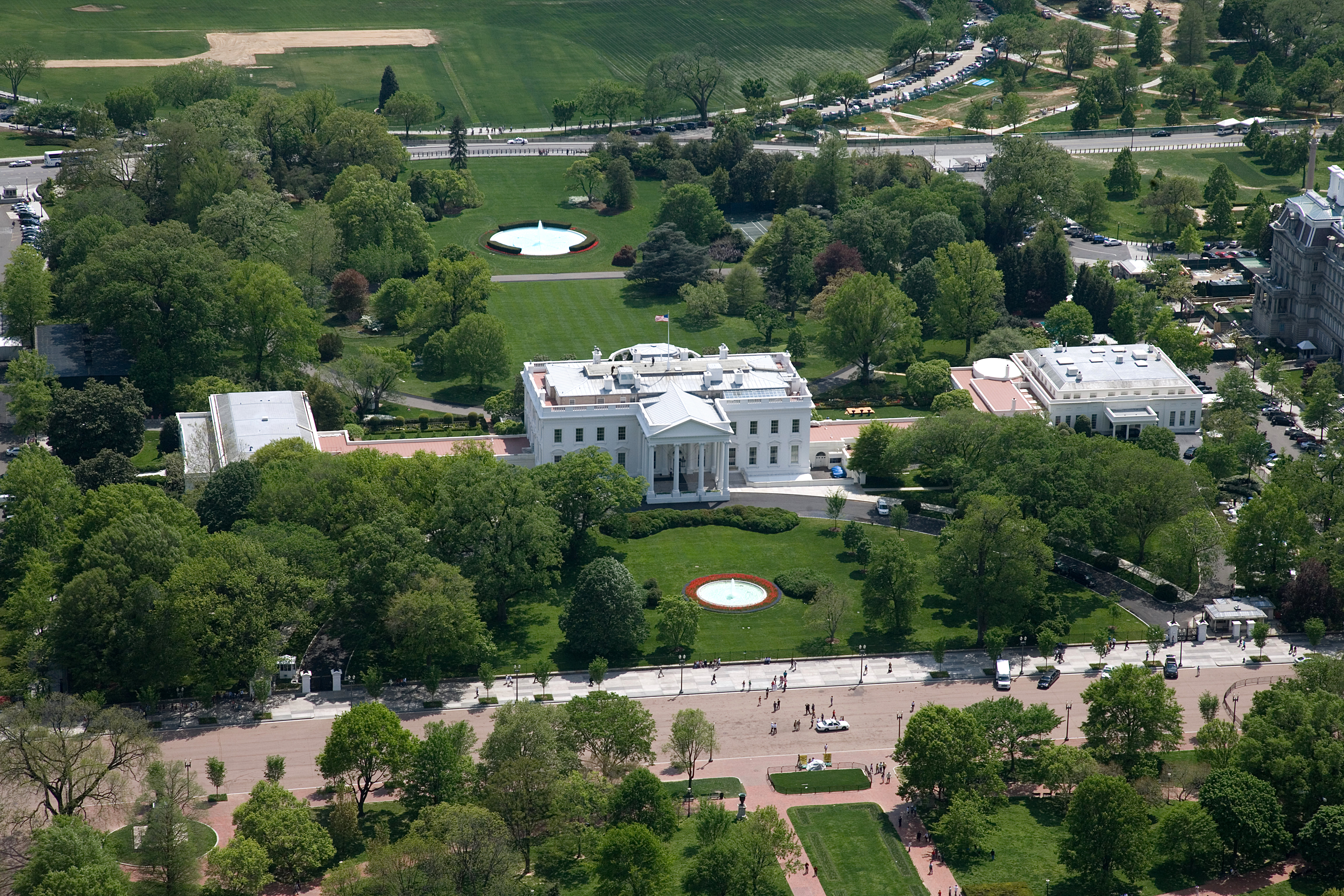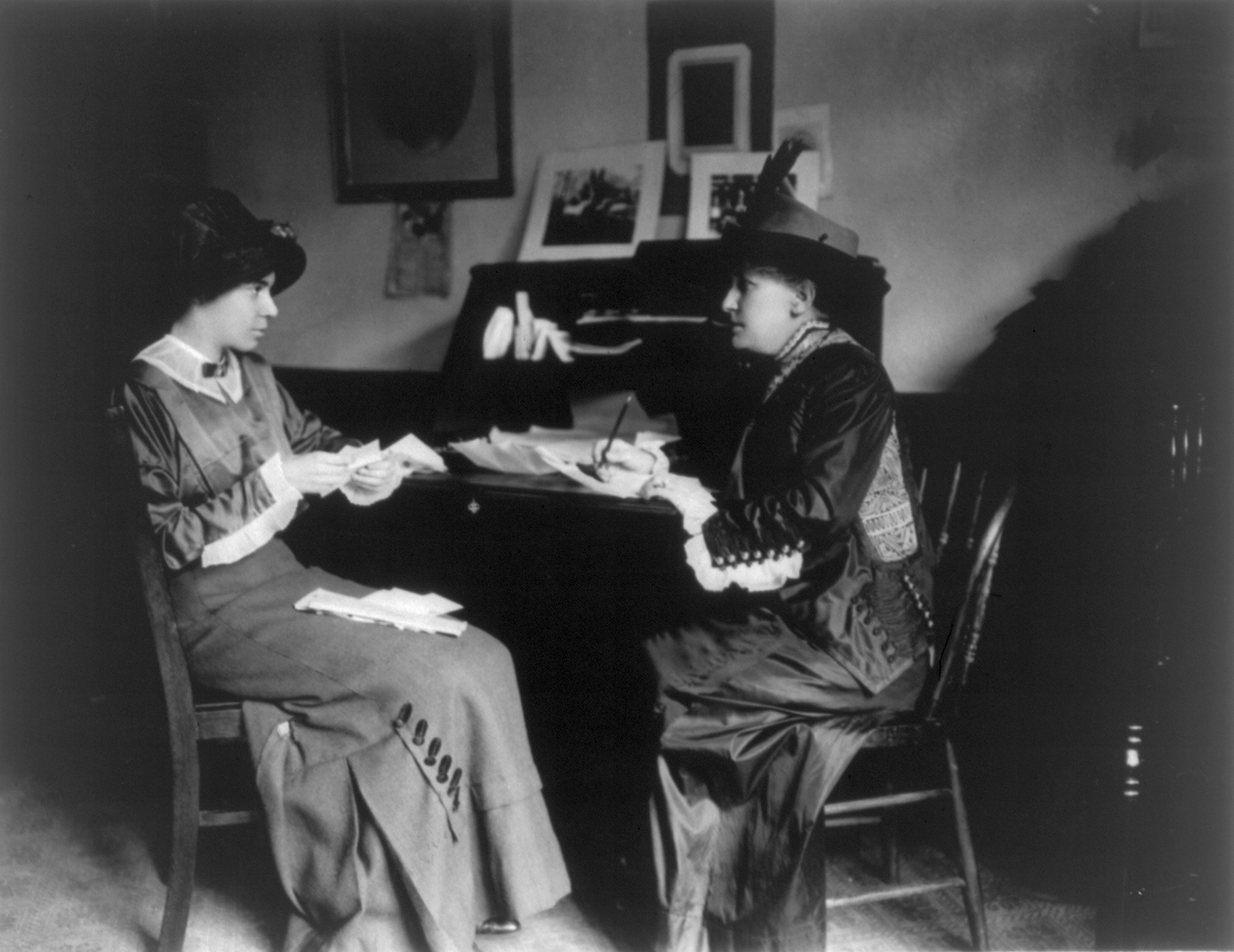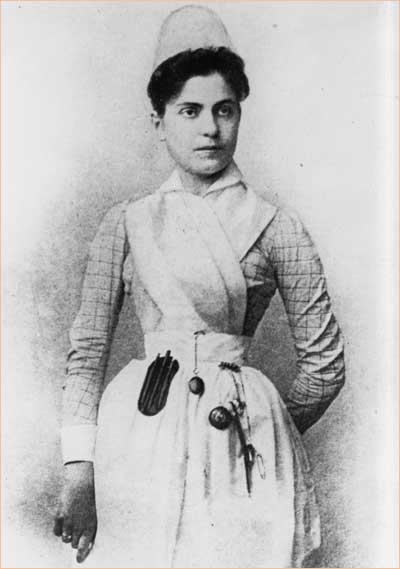|
Lavinia Dock
Lavinia Lloyd Dock (February 26, 1858 – April 17, 1956) was a nurse, feminist, author, pioneer in nursing education and social activist. Dock was an assistant superintendent at Johns Hopkins School of Nursing under Isabel Hampton Robb. She founded what would become the National League for Nursing with Robb and Mary Adelaide Nutting. Dock was a contributing editor to the ''American Journal of Nursing'' and authored several books, including a four-volume history of nursing (with M. Adelaide Nutting as co-author) and ''Materia Medica for Nurses'', the nurse's standard manual of drugs for many years. In her later life, she also campaigned for social reform, particularly women's rights. Early life Lavinia Dock was born one of six children in Harrisburg, Pennsylvania on February 26, 1858. Dock's mother died when she was eighteen. She and her siblings were financially independent due to an income from a land that their parents inherited, which allowed her greater choice in her career ... [...More Info...] [...Related Items...] OR: [Wikipedia] [Google] [Baidu] |
Johns Hopkins School Of Nursing
The Johns Hopkins University School of Nursing (JHUSON) is the nursing school of Johns Hopkins University in Baltimore, Maryland. Established in 1889, it is one of the nation's oldest schools for nursing education. It is continuously rated as the top nursing program in the US per U.S. News & World Report. Origins The founder Johns Hopkins' desire for a training school for female nurses was formally stated in a posthumous 1873 instruction letter to the board of trustees of the Johns Hopkins institutions. The School of Nursing in conjunction with the Johns Hopkins Hospital was eventually founded in 1889 after in depth consultation with Florence Nightingale on its planning, organization, structure and curriculum. Location The Johns Hopkins University School of Nursing is located on the Johns Hopkins University East Baltimore campus along with the Bloomberg School of Public Health, School of Medicine, and the Johns Hopkins Hospital. Academics The School of Nursing offers a variety o ... [...More Info...] [...Related Items...] OR: [Wikipedia] [Google] [Baidu] |
National Association Of Colored Graduate Nurses
The National Association of Colored Graduate Nurses was a professional organization for African American nurses founded in 1908. Foundation In 1906, Connecticut nurse Martha Minerva Franklin surveyed African American nurses to see what challenges they faced as a group. Franklin determined that the prestigious American Nurses Association was technically open to African American members, but many State Nurses Associations refused to admit black members. State-level membership was required to join the American Nurses Association and thus, many qualified African American nurses were barred from full membership in the national association. In 1908, fifty-two nurses, including Martha Minerva Franklin and Adah Belle Samuels Thoms, met in New York City and decided to start the NACGN. Franklin was elected president at the first meeting. As they left the meeting they had three main goals: "to advance the standards and best interests of trained nurses, to break down discrimination in the ... [...More Info...] [...Related Items...] OR: [Wikipedia] [Google] [Baidu] |
White House
The White House is the official residence and workplace of the president of the United States. It is located at 1600 Pennsylvania Avenue Northwest, Washington, D.C., NW in Washington, D.C., and has been the residence of every U.S. president since John Adams in 1800. The term "White House" is often used as a metonym for the Executive Office of the President of the United States, president and his advisers. The residence was designed by Irish-born architect James Hoban in the Neoclassical architecture, neoclassical style. Hoban modelled the building on Leinster House in Dublin, a building which today houses the Oireachtas, the Irish legislature. Construction took place between 1792 and 1800, using Aquia Creek sandstone painted white. When Thomas Jefferson moved into the house in 1801, he (with architect Benjamin Henry Latrobe) added low colonnades on each wing that concealed stables and storage. In 1814, during the War of 1812, the mansion was set ablaze by British forces in ... [...More Info...] [...Related Items...] OR: [Wikipedia] [Google] [Baidu] |
The Suffragist
''The Suffragist'' was a weekly newspaper published by the Congressional Union for Woman Suffrage in 1913 to advance the cause of women's suffrage. The publication was first envisioned as a small pamphlet by the Congressional Union (CU), a new affiliate of the National American Woman Suffrage Association (NAWSA), which in 1917 became the NWP. It evolved into an eight-page weekly tabloid newspaper when the first issue appeared on 15 November 1913. Started by Alice Paul with Rheta Childe Dorr as its first editor, its goal was to spread women's political news and to advance movements toward a suffrage amendment. The newspaper gave its publishers an avenue to communicate directly with each other and supporters without mainstream media. In its six years, the publication played an important role in the eventual success of the suffrage movement. ''The Suffragist'' recorded protests and arrests in news accounts and editorials. Along with political cartoons, illustrations, photographs, ... [...More Info...] [...Related Items...] OR: [Wikipedia] [Google] [Baidu] |
Suffrage Hikes
The Suffrage Hikes of 1912 to 1914 brought attention to the issue of women's suffrage. Florence Gertrude de Fonblanque organised the first from Edinburgh to London. Within months Rosalie Gardiner Jones had organized the first American one which left from The Bronx to Albany, New York. The second hike was from New York City to Washington, D.C., and covered 230 miles in 17 days. American participants The major participants of the hikes, and the ones who covered the entire distance, were reporter Emma Bugbee, Ida Craft (nicknamed The Colonel), Elisabeth Freeman, and Rosalie Gardiner Jones, who was known as The General. 1912 Suffrage Hike to Albany It began on Monday morning at 9:40 am, December 16, 1912, and left from the 242nd Street subway station in The Bronx where about 500 women had gathered. About 200, including the newspaper correspondents, started to walk north. The march continued for thirteen days, through sun and rain and snow covering a distance of 170 miles, includin ... [...More Info...] [...Related Items...] OR: [Wikipedia] [Google] [Baidu] |
Alice Paul
Alice Stokes Paul (January 11, 1885 – July 9, 1977) was an American Quaker, suffragist, feminist, and women's rights activist, and one of the main leaders and strategists of the campaign for the Nineteenth Amendment to the U.S. Constitution, which prohibits sex discrimination in the right to vote. Paul initiated, and along with Lucy Burns and others, strategized events such as the Woman Suffrage Procession and the Silent Sentinels, which were part of the successful campaign that resulted in the amendment's passage in August of 1920.Baker, Jean H.,Placards At The White House" ''American Heritage'', Winter 2010, Volume 59, Issue 4. Paul often suffered police brutality and other physical abuse for her activism, always responding with nonviolence and courage. She was jailed under terrible conditions in 1917 for her participation in a Silent Sentinels protest in front of the White House, as she had been several times during earlier efforts to secure the vote for women in Engl ... [...More Info...] [...Related Items...] OR: [Wikipedia] [Google] [Baidu] |
National Woman's Party
The National Woman's Party (NWP) was an American women's political organization formed in 1916 to fight for women's suffrage. After achieving this goal with the 1920 adoption of the Nineteenth Amendment to the United States Constitution, the NWP advocated for other issues including the Equal Rights Amendment. The most prominent leader of the National Woman's Party was Alice Paul, and its most notable event was the 1917–1919 Silent Sentinels vigil outside the gates of the White House. As of January 1, 2021, NWP has ceased operations as its own independent non-profit and has assigned its trademark rights and other uses of the party's name to the Alice Paul Institute. The Alice Paul Institute has invited three members of NWP Board of Directors to join their board and in the near future will created a new committee to "advise on a potential expansion of programs to the Washington, DC area and nationally". Overview The National Woman's Party was an outgrowth of the Congressiona ... [...More Info...] [...Related Items...] OR: [Wikipedia] [Google] [Baidu] |
Washington, D
Washington commonly refers to: * Washington (state), United States * Washington, D.C., the capital of the United States ** A metonym for the federal government of the United States ** Washington metropolitan area, the metropolitan area centered on Washington, D.C. * George Washington (1732–1799), the first president of the United States Washington may also refer to: Places England * Washington, Tyne and Wear, a town in the City of Sunderland metropolitan borough ** Washington Old Hall, ancestral home of the family of George Washington * Washington, West Sussex, a village and civil parish Greenland * Cape Washington, Greenland * Washington Land Philippines * New Washington, Aklan, a municipality *Washington, a barangay in Catarman, Northern Samar *Washington, a barangay in Escalante, Negros Occidental *Washington, a barangay in San Jacinto, Masbate *Washington, a barangay in Surigao City United States * Washington, Wisconsin (other) * Fort Washington (disambigu ... [...More Info...] [...Related Items...] OR: [Wikipedia] [Google] [Baidu] |
NY Women's Trade Union
NY most commonly refers to: * New York (state), a state in the Northeastern United States * New York City, the most populous city in the United States, located in the state of New York NY, Ny or ny may also refer to: Places * North Yorkshire, an English county * Ny, Belgium, a village * Old number plate of German small town Niesky People * Eric Ny (1909–1945), Swedish runner * Marianne Ny, Swedish prosecutor Letters * ny (digraph), an alphabetic letter * Nu (letter), the 13th letter of the Greek alphabet, transcribed as "Ny" * ñ (énye), sometimes transcribed as "ny" Other uses * New Year * Air Iceland (IATA code: NY) * Chewa language (ISO 639-1 code: ny) See also * New Year (other) * New York (other) * NYC (other) * NYS (other) NYS may refer to: *New York Skyports Seaplane Base (IATA: NYS) * National Youth Service (other), National Youth Service, of several countries * New York State * New York Shipbuildin ... [...More Info...] [...Related Items...] OR: [Wikipedia] [Google] [Baidu] |
New York Shirtwaist Strike Of 1909
The New York shirtwaist strike of 1909, also known as the Uprising of the 20,000, was a labour strike primarily involving Jewish women working in New York shirtwaist factories. It was the largest strike by female American workers up to that date. Led by Clara Lemlich and the International Ladies' Garment Workers' Union, and supported by the National Women's Trade Union League of America (NWTUL), the strike began in November 1909. In February 1910, the NWTUL settled with the factory owners, gaining improved wages, working conditions, and hours. The end of the strike was followed only a year later by the Triangle Shirtwaist Factory Fire, which exposed the plight of immigrant women working in dangerous and difficult conditions. Background During the 20th century, American textile workers of all categories—and female textile workers in particular—were subjected to abysmal working conditions, marked by crowded, unsanitary facilities, long work days, and miserable wages. Producti ... [...More Info...] [...Related Items...] OR: [Wikipedia] [Google] [Baidu] |
Women's Trade Union League
The Women's Trade Union League (WTUL) (1903–1950) was a U.S. organization of both working class and more well-off women to support the efforts of women to organize labor unions and to eliminate sweatshop conditions. The WTUL played an important role in supporting the massive strikes in the first two decades of the twentieth century that established the International Ladies' Garment Workers' Union and Amalgamated Clothing Workers of America and in campaigning for women's suffrage among men and women workers. Origins The roots of the WTUL can be traced back to the settlement house movement, which brought together middle and upper class reformers with working class women to live in settlement houses in an effort to provide them assistance. However, reformers began to notice the constraints of this system. One of these reformers, American Socialist William English Walling, was the first to take note of the British WTUL. Working in settlement houses in Chicago and New York, he ha ... [...More Info...] [...Related Items...] OR: [Wikipedia] [Google] [Baidu] |
Lillian Wald
Lillian D. Wald (March 10, 1867 – September 1, 1940) was an American nurse, humanitarian and author. She was known for contributions to human rights and was the founder of American community nursing. She founded the Henry Street Settlement in New York City and was an early advocate to have nurses in public schools. After growing up in Ohio and New York, Wald became a nurse. She briefly attended medical school and began to teach community health classes. After founding the Henry Street Settlement, she became an activist for the rights of women and minorities. She campaigned for suffrage and was a supporter of racial integration. She was involved in the founding of the National Association for the Advancement of Colored People (NAACP). Wald died in 1940 at the age of 73. Early life and education Wald was born into a wealthy German-Jewish medical family in Cincinnati, Ohio. Her parents were Max D. Wald and Minnie (Schwarz) Wald. Her father was an optical dealer; her uncle, Henry ... [...More Info...] [...Related Items...] OR: [Wikipedia] [Google] [Baidu] |

_d6db2bf1ce_o.jpg)


